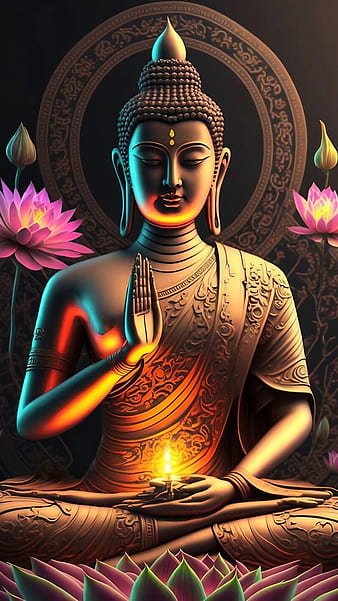Gautam buddha

Gautama Buddha (c. 563/480 – c. 483/400 BCE), also known as Siddhartha Gautama, was a spiritual teacher, philosopher, and the founder of Buddhism. His teachings have shaped the spiritual landscape of much of Asia and beyond, guiding millions of followers towards a path of enlightenment, inner peace, and self-liberation.
Early Life
Siddhartha was born into a royal family in Lumbini, in what is now Nepal, as the son of King Suddhodana and Queen Maya. According to tradition, astrologers predicted that he would either become a great king or a revered spiritual leader. To ensure that Siddhartha would follow the path of a ruler, his father shielded him from the harsh realities of life, keeping him in a luxurious palace.
The Four Sights and the Quest for Enlightenment
At the age of 29, despite his father's efforts, Siddhartha encountered the Four Sights: an old man, a sick person, a corpse, and an ascetic monk. These experiences deeply troubled him, making him realize that suffering was an inescapable part of human existence. This led him to renounce his princely life and embark on a journey as a wandering ascetic in search of the truth about human suffering and the way to overcome it.
Enlightenment Under the Bodhi Tree
After years of extreme ascetic practices, Siddhartha realized that self-mortification was not the way to attain enlightenment. Instead, he adopted the Middle Way—a path between self-indulgence and self-denial. He sat in deep meditation under the Bodhi Tree in Bodh Gaya, India, vowing not to rise until he had found the truth. After days of profound meditation, at the age of 35, Siddhartha attained enlightenment (Bodhi) and became the Buddha, meaning the "Awakened One."
The Teachings of Buddha
Buddha began sharing his insights, which later became the foundation of Buddhism. His teachings are encapsulated in the Four Noble Truths and the Eightfold Path:
- The Four Noble Truths:
Life involves suffering (Dukkha).
The cause of suffering is desire or attachment (Tanha).
Suffering can be overcome (Nirvana).
The path to the cessation of suffering is the Eightfold Path.
- The Eightfold Path: A guide to ethical and mental development, leading to liberation:
Right Understanding
Right Intent
Right Speech
Right Action
Right Livelihood
Right Effort
Right Mindfulness
Right Concentration
These principles emphasize ethical conduct, mental discipline, and wisdom as essential components for achieving enlightenment.
Later Life and Legacy
For over 45 years, the Buddha traveled throughout the Ganges River Plain, spreading his teachings to people from all walks of life. He established a community of monks and nuns known as the Sangha and urged them to live by the principles of the Middle Way.
The Buddha passed away at the age of around 80 in Kushinagar, India, after consuming what might have been a meal of spoiled food, though the exact cause is uncertain. His death is referred to as Parinirvana, which is the final nirvana that comes with the end of the cycle of birth, suffering, and death.
Impact on the World
Buddha's teachings laid the foundation for Buddhism, which spread across Asia, influencing the development of various cultures and philosophies in countries like Sri Lanka, Thailand, China, Japan, Tibet, and beyond. His emphasis on compassion, non-violence, and mindfulness continues to resonate with millions of people worldwide.
The symbolism of Buddha—sitting in meditation under the Bodhi Tree or delivering his first sermon at Sarnath—has become iconic. Sites associated with his life, like Lumbini, Bodh Gaya, Sarnath, and Kushinagar, are among the most important pilgrimage destinations for Buddhists today.
Conclusion
Gautama Buddha's teachings transcend religious boundaries, offering practical wisdom on how to lead a life free from suffering. His emphasis on compassion, mindfulness, and inner peace is as relevant today as it was over 2,500 years ago, making him one of history’s most profound and influential spiritual leaders.